Conceptual engineering is an important phase of the development process, in which rapid idea capture is paramount. Conceptual design is the explicit construction of ideas or concepts to visualize a product and for alternative designs to evolve. NESTech will take your product from Concept to Reality. Based on customer specifications, we will evaluate numerous concepts and develop the one that best fits the needs. Product Cost, Time to Market and Product Quality are our primary concerns. Our concept design process encompasses digital visualization with 3D layout for packaging studies. While we design we will take care of the down steam applications like simulation, tool design and manufacturing.
NESTech will assist you in any stage of your project. When you work with us, we become an integral part of your team and are fully committed to meeting your project goals and delivery schedules. Our services include model generation, production drawing creation, Tooling, simulation and manufacturing.
We understand that our customers always want to develop efficient methods to reduce the product design cycle time. We help companies automate their design processes through the creation of "Template" parts and assemblies, which reduces the product design cycle considerably. NESTech will also develop "best practices" and process documentation to help automate the creation of similar products.
NESTech engineers have the experience, background and tools to help you convert your ideas into real products.

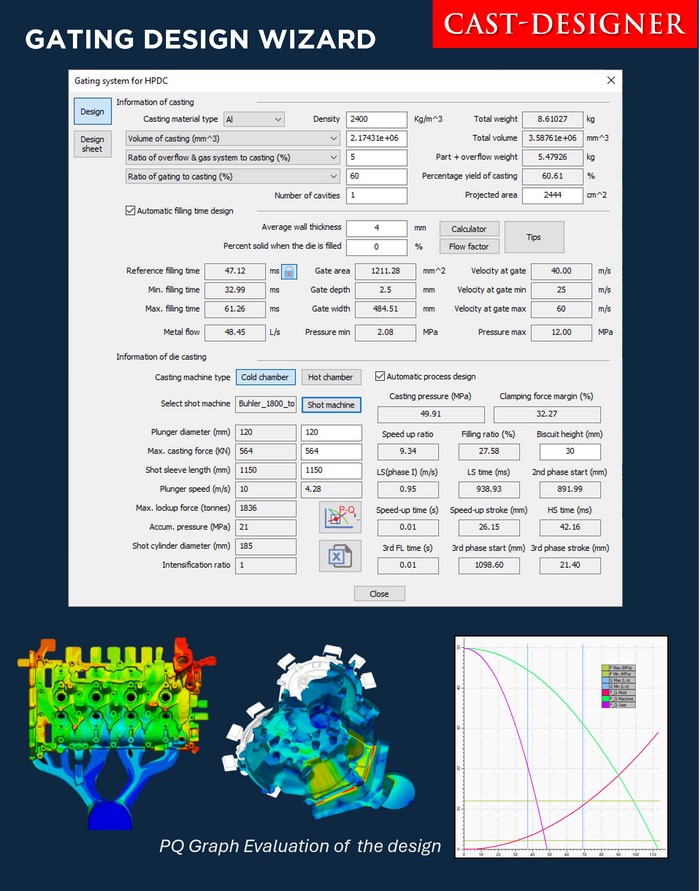
The HPDC Gating Design Wizard streamlines gating design by accepting key casting inputs and delivering optimized results quickly and accurately.
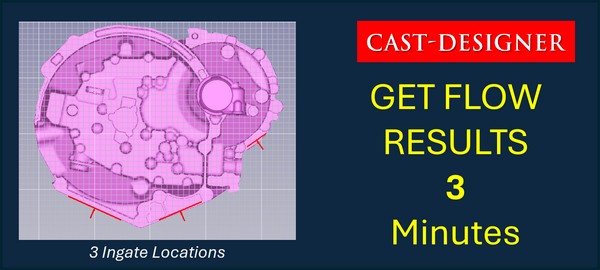
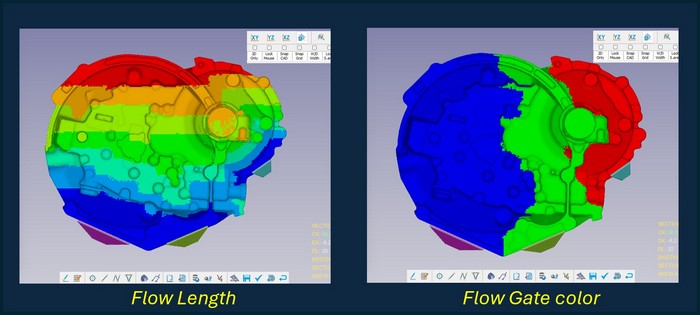
QuickCast enables rapid flow simulation in minutes by simply placing ingates with a point, direction, and weight factor. Ideal for early-stage design, it helps optimize part orientation and gating layout quickly.
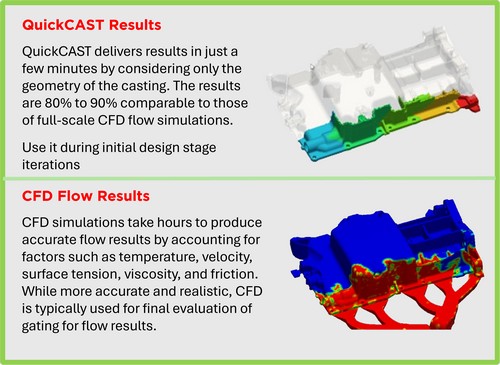
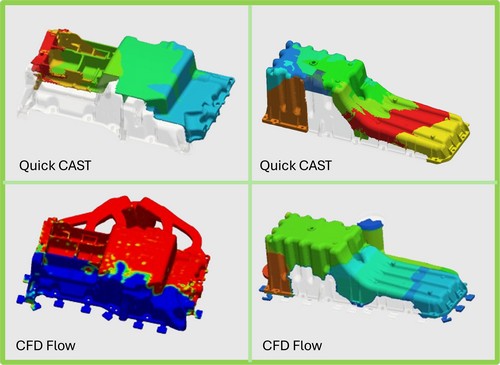
QuickCast enables rapid flow simulation in minutes by simply placing ingates with a point, direction, and weight factor. Ideal for early-stage design, it helps optimize part orientation and gating layout quickly.
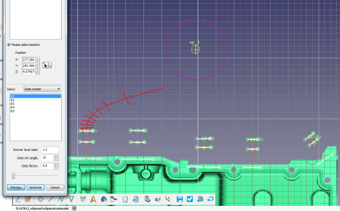
Place Sprue. To create runner, select an ingate (created in previous step) and pick a point towards sprue, runner automatically created as per width of the ingate size.
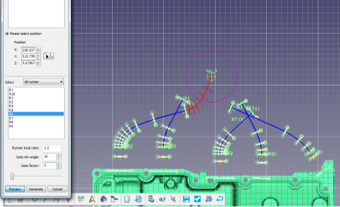
select other ingates and points of the desired location of the runner on screen, runner automatically created with correct width, draft, height as required for the ingate
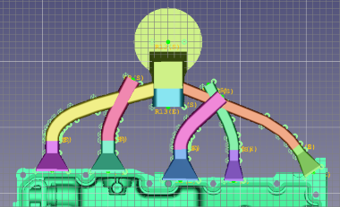
View runners in 3D, runner section width and height gradually reduced with proper draft angle. Each runner width is as per the width required for the ingate.
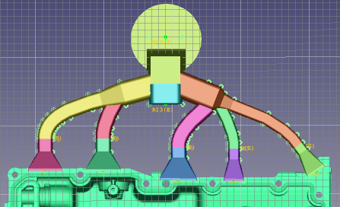
Select 1st runner as master and select 2nd to merge, runner section of the 1st runner automatically adjusted where 2nd runner is merging. Similarly in the other side runners.
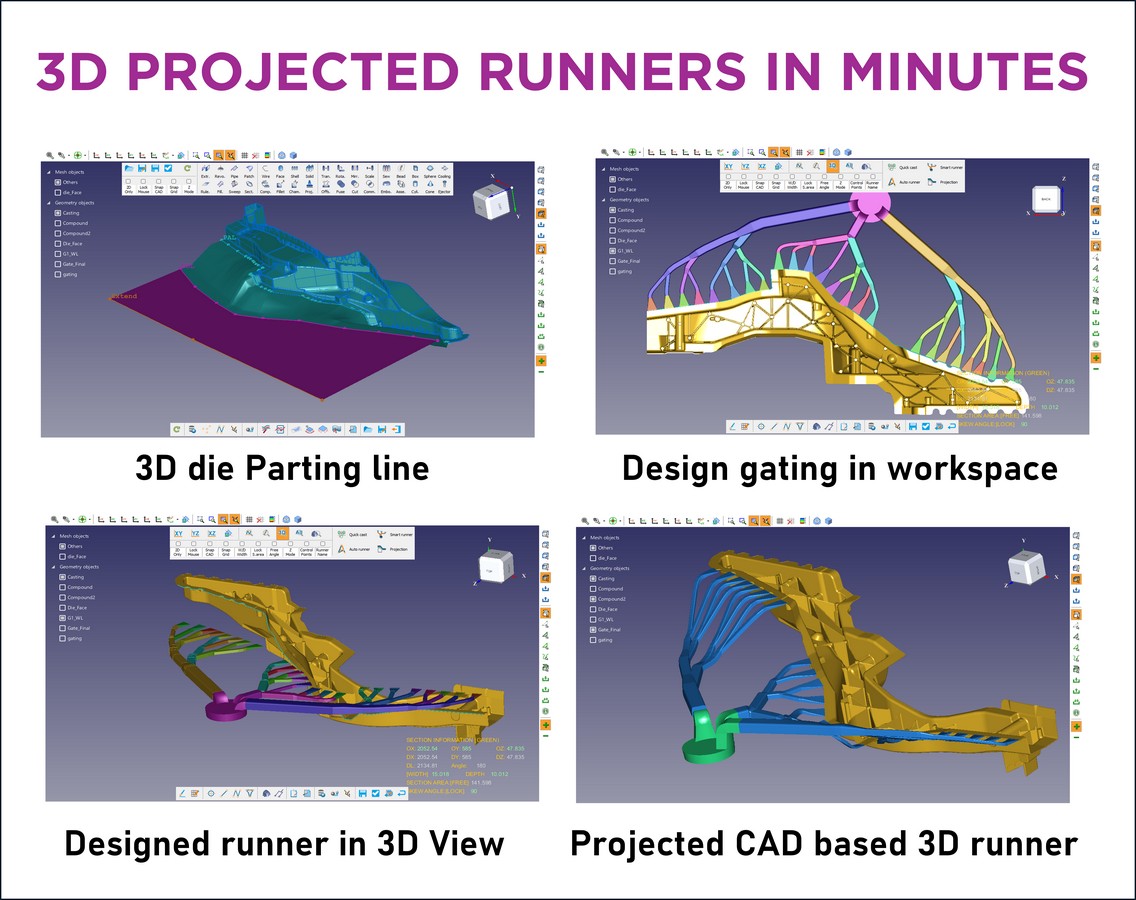
Cast-Designer simplifies complex 3D runner creation using its built-in ParaCAD system. Just define the workspace, build the 3D die face and addendum, and use the 3D runner projection tool to generate a CAD-based 3D runner system with ease.

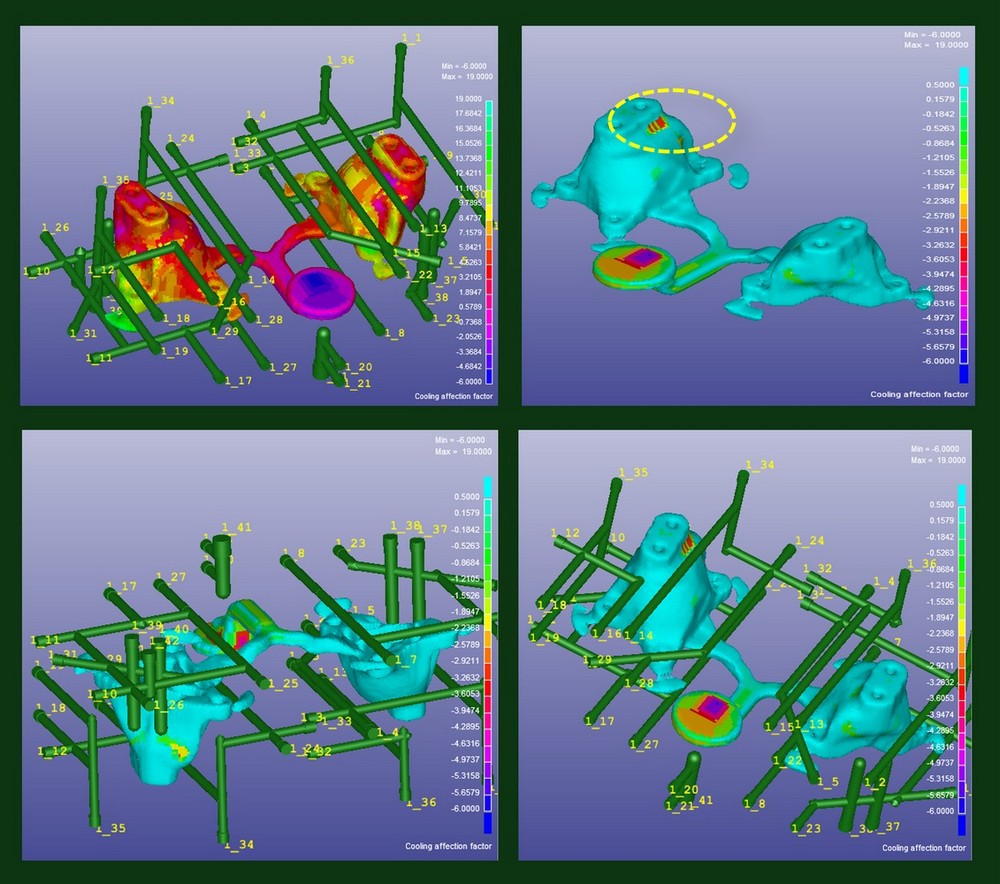
RED colored region indicates thick region and as well as that cooling is not sufficient, may leave a shrinkage porosity
Cast-Designer revolutionizes cooling system design with SmartCooling and FastCooling, enabling rapid analysis during the early design stage—without requiring full mold geometry or detailed HTC data.
This fast, geometry-based approach helps reduce development time, improve product quality, and extend die service life.
SmartCooling automates die casting cooling system design using AI to create optimized, efficient cooling layouts. The process is 10–30x faster than traditional methods and follows a powerful 3-step approach:
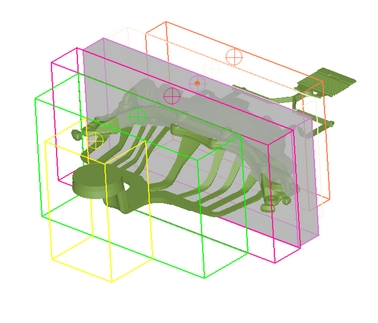
Assign key regions based on metal flow—up to 6 main zones and 24 sub-regions. Set casting/mold materials, cooling properties, and production targets. This forms the foundation for intelligent cooling layout planning.
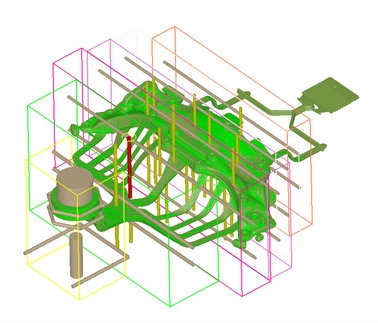
The AI engine uses defined parameters to auto-generate a complete cooling system with parametric 3D geometry—supporting both standard and jet cooling types. This is the core of SmartCooling intelligence.
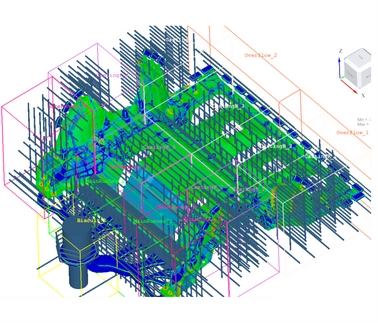
Run FastCooling Analysis to evaluate performance. Instantly see the effect of any changes in channel design, position, or cooling power—enabling fast, data-driven optimization and design decisions. An Larger Example shown above.
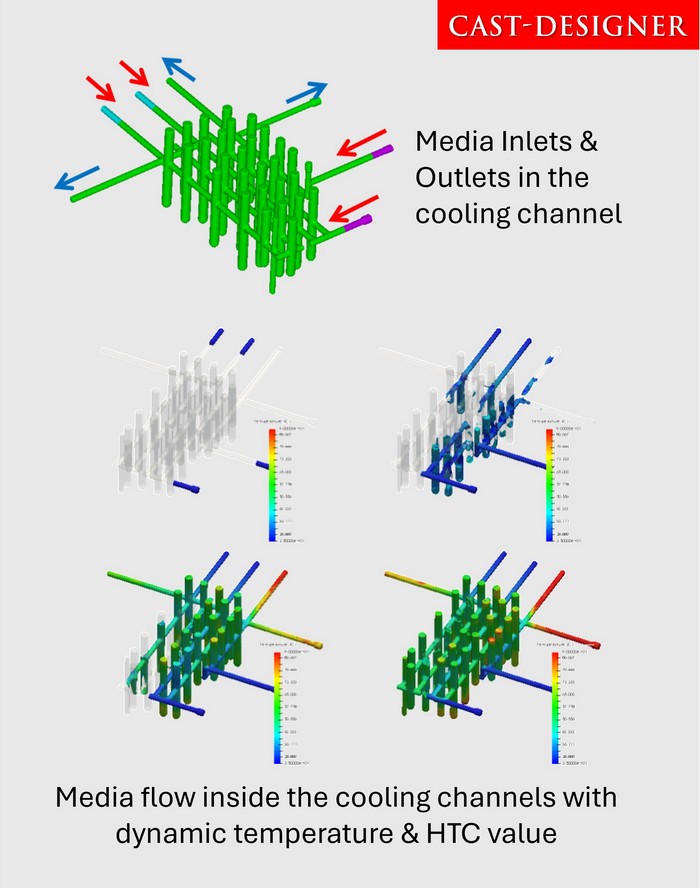
In complex cooling systems, media flow within the channels can be quite intricate. Performing a thermal and flow simulation provides a detailed examination of both the media flow and temperature distribution. Furthermore, the dynamic heat transfer coefficient (HTC) can be derived from the results of the simulation, which can be used in the most accurate Full-Mould Cyclic Flow-Solidification Simulation.
Assign all key parameters for the flowing medium hot or cold
Complex cooling system in GIGA casting, now can be effectively optimized.
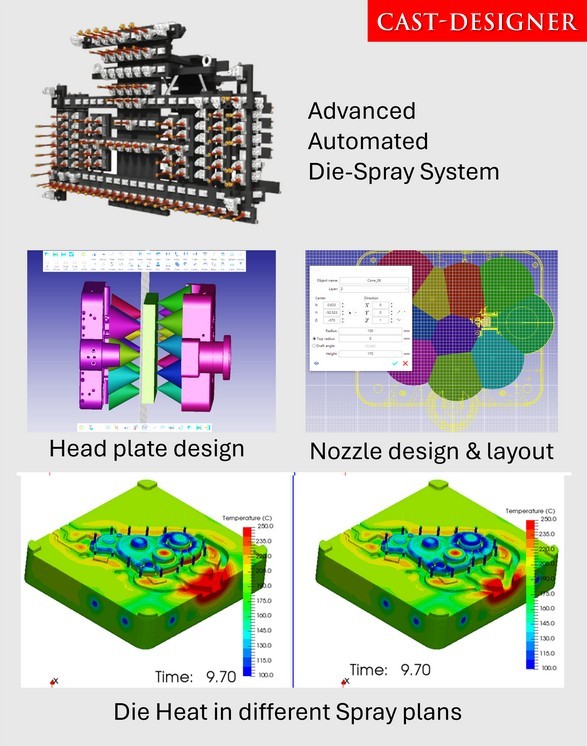
Die-spray is crucial in die casting—poor spray causes thermal shock, die damage, and downtime.
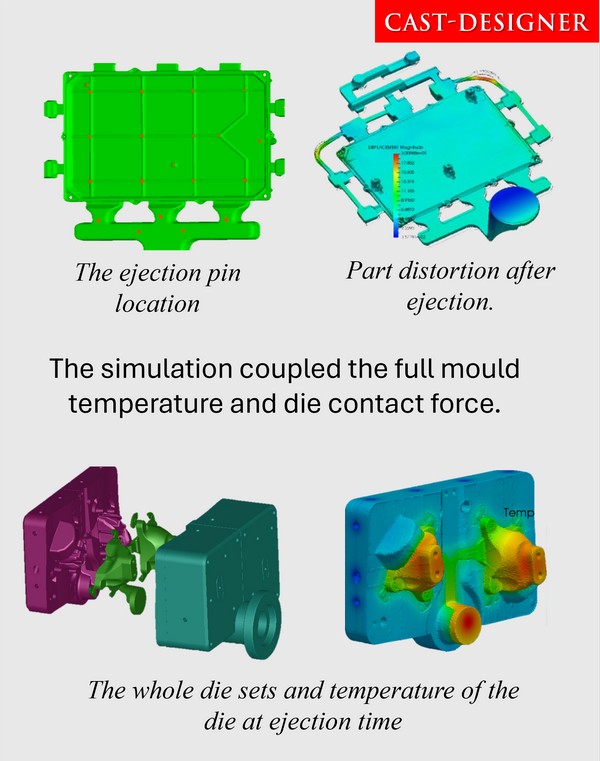
Die casting part quality can be affected during ejection, where parts separate from mold surfaces under force.
The ejection force depends on metal shrinkage and friction at the contact surfaces. Since ejection happens quickly, the static friction coefficient is key to accurate simulation.
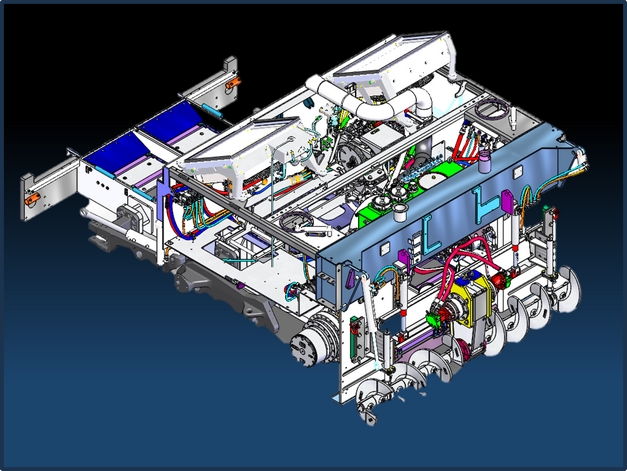
A 14-stage sheetmetal progressive tool. Manufactured in India for heavy SUV, Successfully proven and sent Europe.
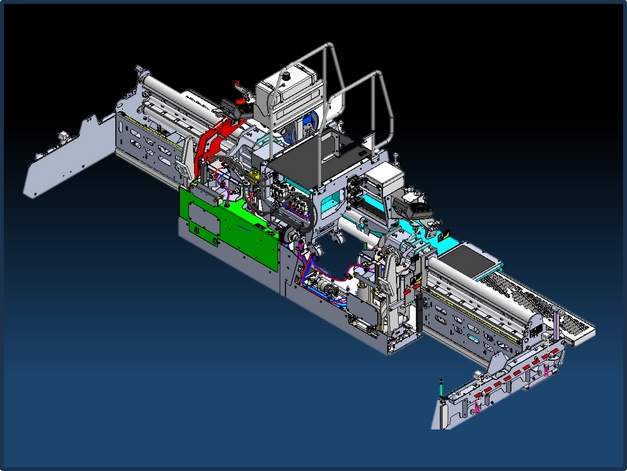
Collections different sheetmetal parts for which progrssive manufacturing tool is manufactured by NESTech
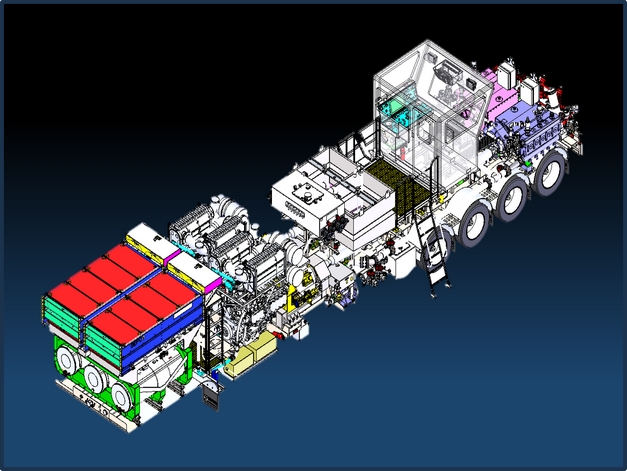
A Closer look at the sheetmetal trial sample produced by our progressive tool exported to Euope.
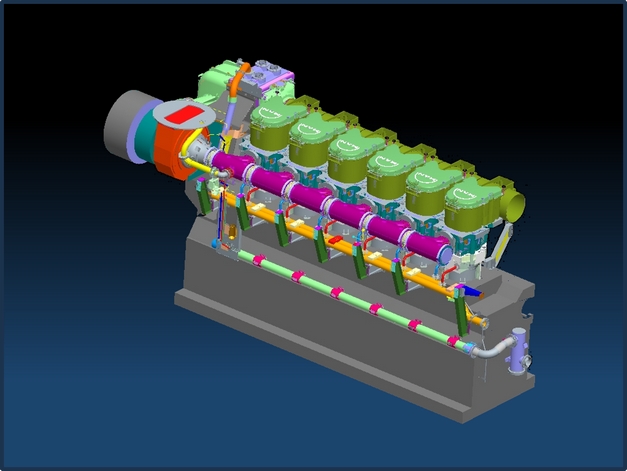
A 10 stage progressive tool drawing to manufacture sheetmetal part for a heavy-duty SUV vehicle.
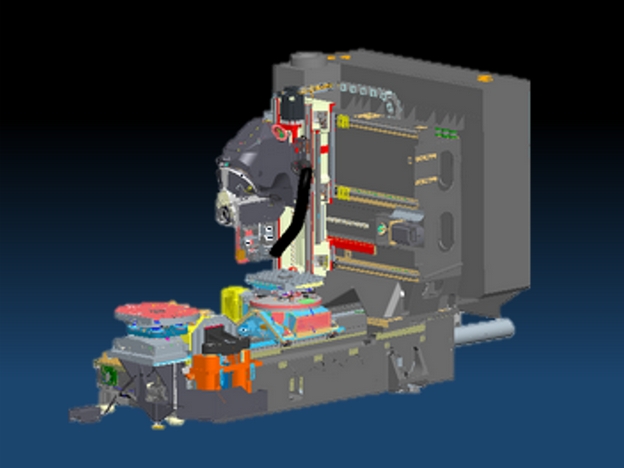
A 14-stage sheetmetal progressive tool. Manufactured in India for heavy SUV, Successfully proven and sent Europe.
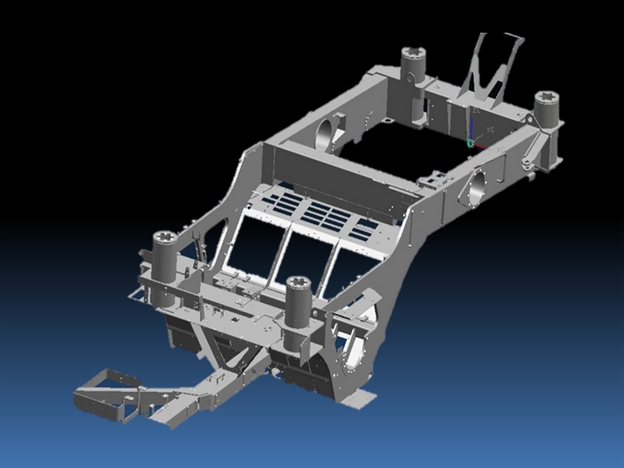
Collections different sheetmetal parts for which progrssive manufacturing tool is manufactured by NESTech
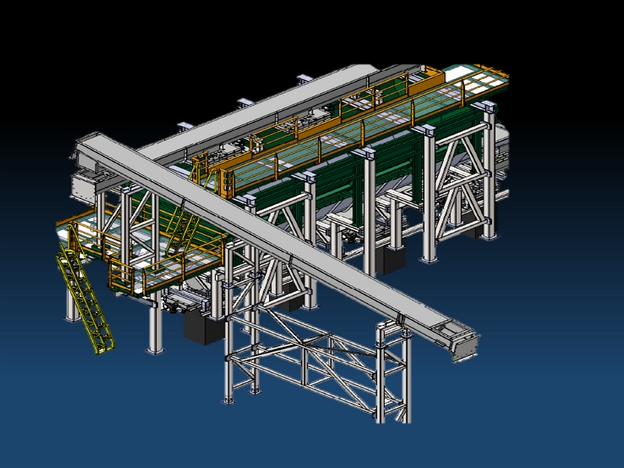
A Closer look at the sheetmetal trial sample produced by our progressive tool exported to Euope.
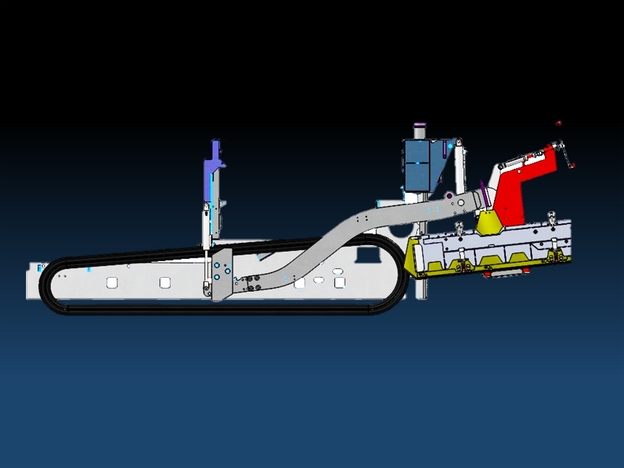
A 10 stage progressive tool drawing to manufacture sheetmetal part for a heavy-duty SUV vehicle.
Check your casting and predict shrinkage, porosity, flow, air entrapment defects – without incurring tooling costs or waiting for trials. Assess your method for potential defects. Optimize it for quality and yield improvement ...learn more
